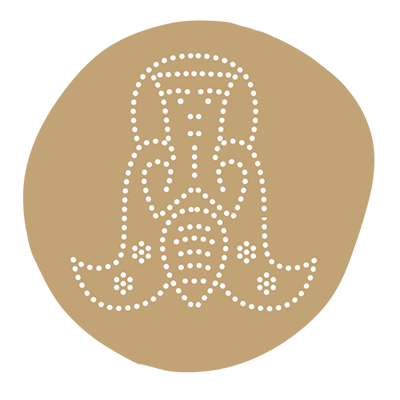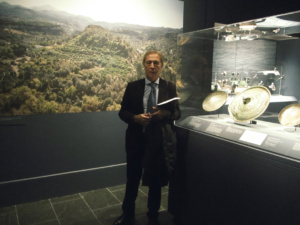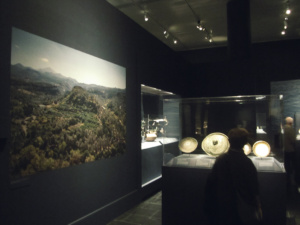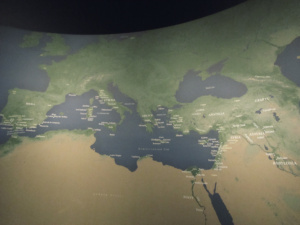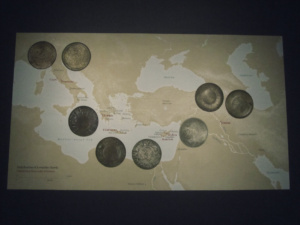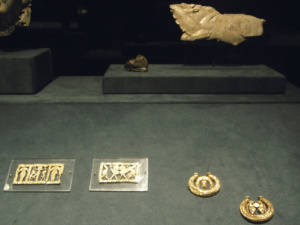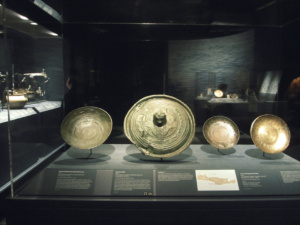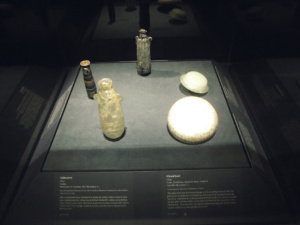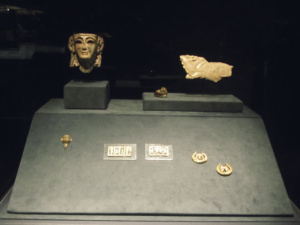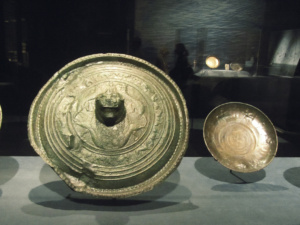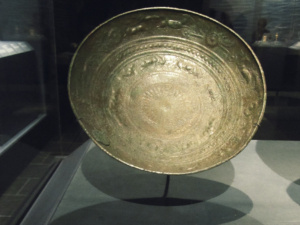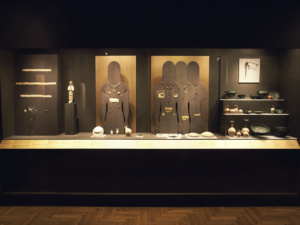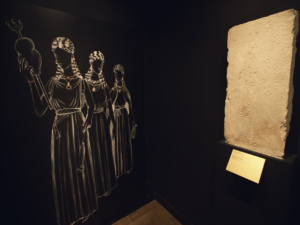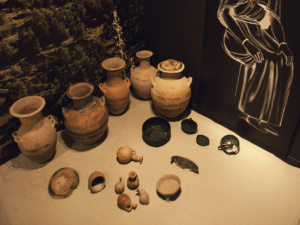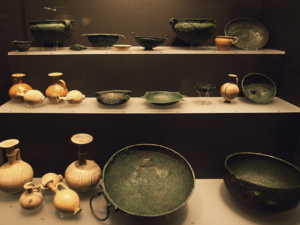Hellenic Ministry of Culture and Sports 2014-2016
The Greeks: From Agamemnon to Alexander the Great
CANADA: POINTE-À-CALLIÈRE, MONTRÉAL?S MUSEUM OF ARCHAEOLOGY AND HISTORY COMPLEX DECEMBER 12, 2014 – APRIL 26, 2015 CANADIAN MUSEUM OF HISTORY, GATINEAU JUNE 5, 2015 – OCTOBER 12, 2015
USA: THE FIELD MUSEUM, CHICAGO, NOVEMBER 24, 2015 – APRIL 10, 2016
NATIONAL GEOGRAPHIC MUSEUM, WASHINGTON, DC MAY 26, 2015 – OCTOBER 9, 2016
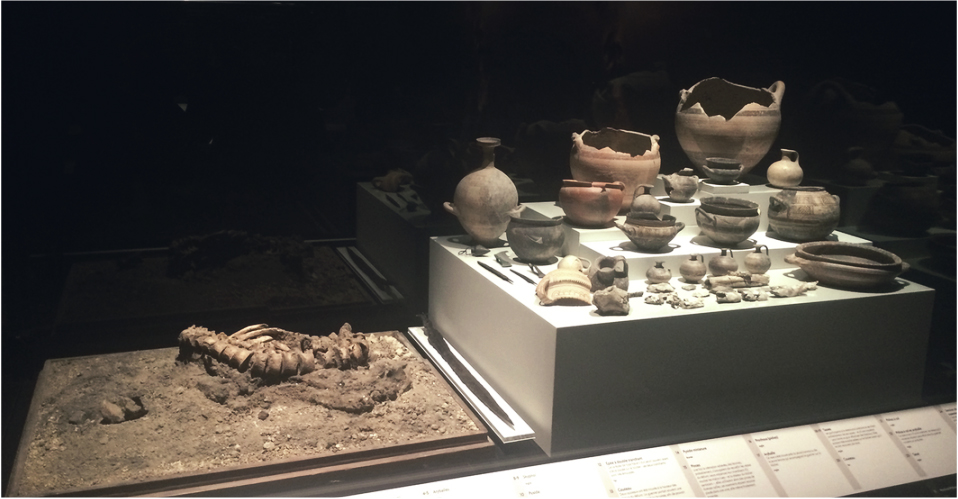
Designed by the Hellenic Ministry of Culture and Sports and hosted in four cities in Canada and the United States beginning in December 2014, this exhibition presents 562 ancient artefacts from Greek museums and antiquities ephorates. Eleutherna participated with the funerary pyre ΛΛ/90-91, which travelled abroad for the first time, and the objects associated with it – including clay vases, bronze objects, and iron weapons.
NEW YORK, METROPOLITAN MUSEUM OF ART 2014
Assyria to Iberia at the Dawn of the Classical Age
The exhibition held at the Metropolitan Museum of Art in New York in the fall of 2014 contributed to our understanding of the cultural exchange and artistic output in the Near East and the Mediterranean in the early first millennium BC. This was the world of Homer and the merchants of antiquity, including the Greeks and the Phoenicians. The exhibits came from museums in the Near and Middle East, Europe, Africa, and the United States. Eleutherna contributed to the exhibition with artefacts imported from Cyprus and the East, such as the famous bronze shield of a type known from the Idaion Andron, gold crescents, and other cut-out jewellery.
ATHENS, MUSEUM OF CYCLADIC ART 2012-2013
Mediterranean Princesses at the Dawn of History
Among the exhibition’s high status ladies, princesses and priestesses from Cyprus, Euboea, Athens, Macedonia, and Etruria, were four singular Eleuthernian princesses-priestesses of the first half of the seventh century BC..
THESSALONIKI ARCHAEOLOGICAL MUSEUM 2011
Greeks and Phoenicians. Mediterranean Crossroads.
This exhibition, which was part of the cultural undertaking of the Hellenic Ministry of Culture and Tourism “Thessaloniki: Cultural Crossroads”, focused on the relations between the Greeks and Phoenicians in antiquity and the cultural interaction between these two peoples.
The exhibits, which came from many museums (American University of Beirut, four Greek museums, and eight Greek antiquities ephorates), included several very important objects from Eleutherna, such as bronze bowls, clay Phoenician and Cypro-Phoenician vases, and a stone cippus from Tanis (Egypt).
ATHENS, MUSEUM OF CYCLADIC ART, 2003
Sea Routes. From Sidon to Huelva, 16th-6th c. BC
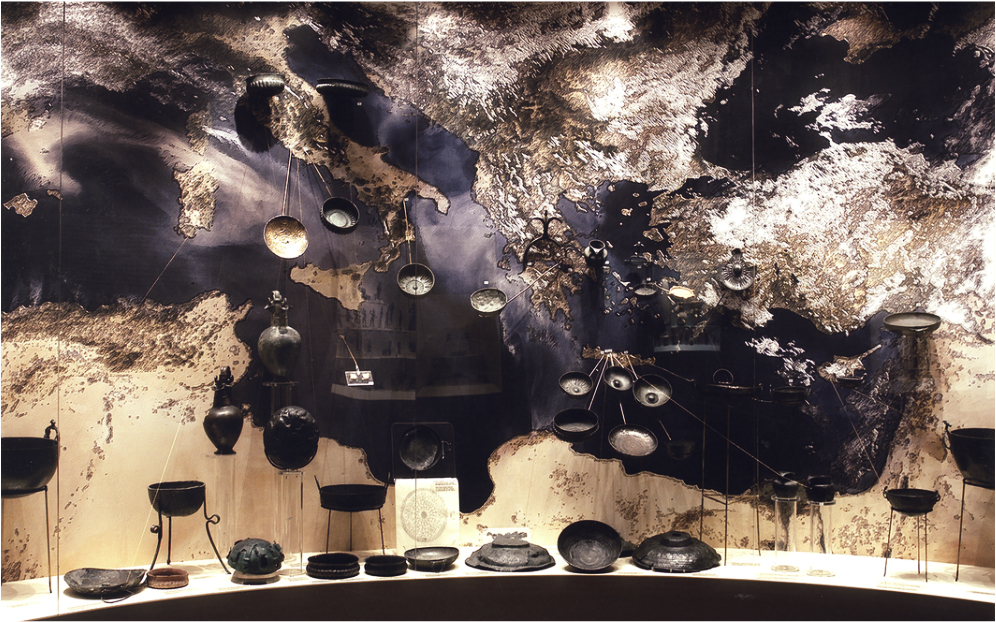
A unique, pioneering exhibition with the participation of 92 museums from across the Mediterranean, Europe, and the United States and with 1211 ancient artefacts, including several important objects from Eleutherna.
These two exhibitions demonstrated Eleutherna’s important role in the Eastern Mediterranean during the Early Iron Age, its connection to the Homeric poems, and its potential for our understanding of ancient cities and their contribution to the advent of Greek civilization.
ROME, MUSEI CAPITOLINI, PALAZZO CAFFARELLI, 2001
Il Mediterrneo Orientale. Navigatori e commerci nel Mediterraneo orientale XVI-VI sec. a.C.
This exhibition’s intention was to present the dense exchange network between the peoples of the Mediterranean during the crucial millennium in the history of the Mediterranean, the period of the transition from the Late Bronze Age to the Early Iron Age. 300 artefacts from museums in Cyprus, Crete, Rhodes, and Kos were displayed.
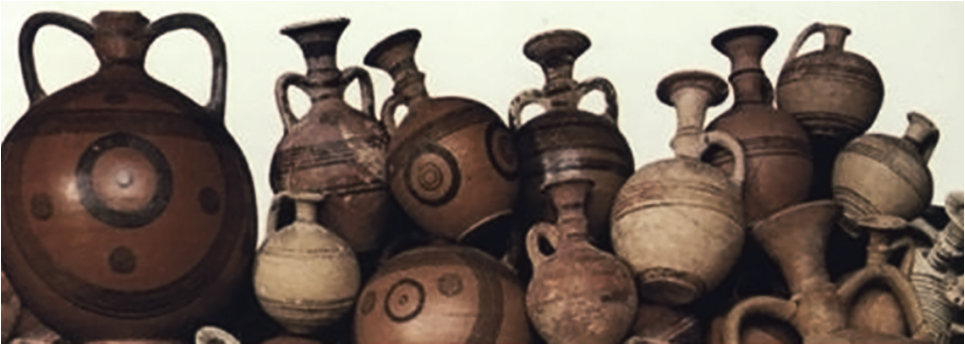
HERAKLEION ARCHAEOLOGICAL MUSEUM, 1998
Eastern Mediterranean: Cyprus – The Dodecanese – Crete, 16th-6th c. BC
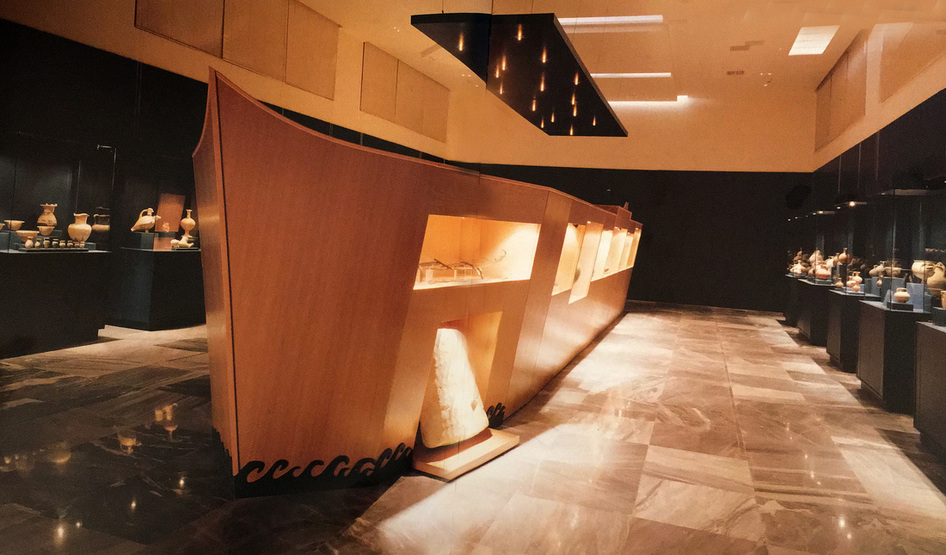
This exhibition’s intention was to give an idea of the circulation of products, people, and ideas during the crucial millennium in the history of the Mediterranean, the period of the transition from the Late Bronze Age to the Early Iron Age. The display presented objects from Cyprus, Crete, and the Dodecanese. The exhibition was realized in collaboration with the University of Crete, the Hellenic Ministry of Culture, and the Twenty Third Ephorate of Prehistoric and Classical Antiquities.
